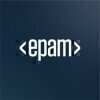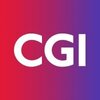Senior Software Test Engineer
100+ Senior Software Test Engineer Interview Questions and Answers

Asked in Test Unity

Q. What is retest and regression testing ?, Difference between authentication and authorization, Black box testing, functionality testing, UAT, STLC, Bug life cycle, Bug tracking tool, traffic light scenario,
Answering questions related to software testing concepts and tools.
Retest testing is done to ensure that the defects found in the previous testing cycle have been fixed.
Regression testing is done to ensure that the changes made to the software do not have any adverse effects on the existing functionality.
Authentication is the process of verifying the identity of a user, while authorization is the process of granting access to specific resources or functionalities based on the...read more

Asked in KPMG India

Q. How do you inspect a drop-down element and write the corresponding syntax for handling drop-downs in Selenium?
To inspect a drop-down element in Selenium, use the 'Select' class to interact with it.
Use the 'Select' class from Selenium's WebDriver library to interact with drop-down elements
Identify the drop-down element using its locator (id, name, class, etc.)
Instantiate a new Select object by passing the drop-down element as a parameter
Use Select object methods like selectByVisibleText(), selectByValue(), selectByIndex() to interact with the drop-down
Senior Software Test Engineer Interview Questions and Answers for Freshers

Asked in KPMG India

Q. What do you write in LINQ, what is its purpose, and how do you validate the database data against the user interface?
LINQ is used to query data from different data sources in C#, purpose is to simplify data querying, validate database data against UI using LINQ queries.
LINQ is used in C# to query data from different data sources like collections, databases, XML, etc.
Purpose of LINQ is to simplify data querying by providing a uniform way to query different types of data sources.
To validate database data against the user interface, LINQ queries can be used to retrieve data from the database a...read more
Asked in Code Vyasa

Q. Oops concepts, how you have used oops concepts in ur current project or framework
I have extensively used OOPs concepts in my current project.
I have used inheritance to create a base class for all test cases.
I have used polymorphism to create different test cases using the same base class.
I have used encapsulation to hide the implementation details of the test cases.
I have used abstraction to create interfaces for the test cases.
I have used SOLID principles to ensure the code is maintainable and extensible.

Asked in KPMG India

Q. What are the concepts of Object-Oriented Programming (OOP) in relation to your project?
OOP concepts in my project include encapsulation, inheritance, and polymorphism.
Encapsulation: Data hiding and bundling of data with methods to operate on that data.
Inheritance: Ability to create new classes based on existing classes, promoting code reusability.
Polymorphism: Ability for objects of different classes to respond to the same method call.
Example: Using inheritance to create a base class 'Shape' with subclasses 'Circle' and 'Rectangle'.

Asked in KPMG India

Q. What are the meanings of "Given," "When," and "Then" in Gherkin language? Please explain.
In Gherkin language, 'Given' sets up the initial context, 'When' describes the action taken, and 'Then' specifies the expected outcome.
Given: Describes the initial state or precondition of the scenario
When: Represents the action or event that occurs
Then: Defines the expected outcome or result after the action is taken
Example: Given a user is logged in, When they click on the 'Logout' button, Then they should be logged out successfully
Senior Software Test Engineer Jobs




Asked in KPMG India

Q. What information do you include in a POM (Project Object Model) file?
POM file includes information about project dependencies, build settings, and plugins in Maven projects.
Project dependencies
Build settings
Plugins

Asked in KPMG India

Q. How do you handle conflicting situations when working on priority-based tasks?
I prioritize tasks based on impact and urgency, communicate with stakeholders, and seek consensus to resolve conflicts.
Prioritize tasks based on impact and urgency
Communicate with stakeholders to understand their perspectives
Seek consensus by discussing conflicting priorities with team members
Use data and metrics to support decision-making
Stay flexible and adapt to changing priorities
Share interview questions and help millions of jobseekers 🌟


Asked in Mediaocean

Q. How would you convince me that you need 8 hours for GUI testing when I believe it can be completed in 2 hours?
Testing requires thoroughness; GUI testing needs time for comprehensive coverage and quality assurance.
GUI testing involves various scenarios, including user interactions, which can be complex and time-consuming.
For example, testing different screen resolutions and browser compatibility requires extensive checks.
Automated tests can speed up the process, but initial setup and maintenance still require significant time investment.
User experience testing is subjective and often ...read more

Asked in Infosys

Q. What is the difference between a scenario and a scenario outline?
A scenario is a single test case while a scenario outline is a template for multiple similar test cases with different inputs.
Scenario is a single test case with specific inputs and expected outcomes
Scenario outline is a template for multiple test cases with placeholders for inputs
In scenario outline, examples table is used to provide different input values for each test case

Asked in EPAM Systems

Q. Different testing types? Verification and validation? Explain process of bug life cycle? Daily activities in ur project and what are different meetings ? More practical orientation questions!
Questions related to software testing and bug life cycle
Different testing types include unit testing, integration testing, system testing, acceptance testing, and more
Verification ensures that the software meets the specified requirements, while validation ensures that the software meets the customer's needs
Bug life cycle includes stages like new, assigned, open, fixed, verified, and closed
Daily activities may include test planning, test execution, defect reporting, and statu...read more

Asked in Charter Global

Q. How do to run screen reader?what are the basic shortcuts for testing
To run a screen reader, use built-in accessibility tools or third-party software. Basic shortcuts include Ctrl+Alt+arrow keys and Ctrl+Shift+arrow keys.
Built-in accessibility tools like Narrator on Windows or VoiceOver on Mac can be used to run a screen reader.
Third-party software like JAWS or NVDA can also be used.
Basic shortcuts for testing include Ctrl+Alt+arrow keys to navigate between headings and Ctrl+Shift+arrow keys to navigate between elements.
Other shortcuts may inc...read more

Asked in KPMG India

Q. What are locators, and what are the different types of XPath?
Locators are used to identify web elements in automated testing. XPath is a language used to navigate XML documents.
Locators are used to find and interact with elements on a web page in automated testing.
XPath is a language for navigating XML documents and is commonly used to locate elements on a web page.
Types of XPath include Absolute XPath, Relative XPath, Contains XPath, and more.
Absolute XPath starts from the root node and navigates through the entire document.
Relative X...read more

Asked in KPMG India

Q. What is the relationship between test coverage and a test matrix?
Test coverage is the measure of how much of the code is tested, while a test matrix is a document that maps test cases to requirements.
Test coverage measures the extent to which the source code of a program is executed during testing.
A test matrix is a document that maps test cases to requirements, helping to ensure that all requirements are covered by test cases.
Test coverage can be used to determine the effectiveness of a test matrix in covering all aspects of the software....read more

Asked in EPAM Systems

Q. How do you handle unclear or ambiguous requirements?
Clarify requirements with stakeholders and document assumptions.
Schedule a meeting with stakeholders to discuss the unclear requirements.
Document assumptions made based on unclear requirements.
Create test cases based on assumptions and seek clarification from stakeholders.
Collaborate with development team to ensure requirements are met.
Track changes to requirements and update test cases accordingly.

Asked in Mediaocean

Q. What is the first thing you will do after finding a bug?
I will document the bug by providing detailed steps to reproduce, screenshots, and any other relevant information.
Document the bug by providing detailed steps to reproduce
Include screenshots or videos if applicable
Provide any relevant logs or error messages
Assign priority and severity to the bug

Asked in KPMG India

Q. Have you ever managed cookies and caches in automation?
Yes, I have experience managing cookies and caches in automation.
Yes, I have written automation scripts to handle cookies by setting, getting, and deleting them.
I have also managed browser caches in automation to ensure accurate testing results.
Utilized tools like Selenium WebDriver to interact with cookies and caches during test execution.

Asked in Teccity Labs

Q. What are the differences between smoke and sanity testing, as well as between regression and retesting?
Smoke testing checks basic functionality, while sanity testing verifies specific functionalities after changes. Regression checks old features; retesting verifies fixes.
Smoke testing is a preliminary test to check if the build is stable enough for further testing.
Example: After a new build, smoke testing might check if the application launches and basic features work.
Sanity testing is a subset of regression testing focused on verifying specific functionalities after changes.
E...read more

Asked in Teccity Labs

Q. What is the importance of including software testing as a part of the Software Development Life Cycle (SDLC)?
Software testing is crucial in SDLC to ensure quality, reliability, and performance of software products.
Early detection of defects: Testing during SDLC helps identify issues early, reducing costs and time for fixes. For example, finding a bug in the design phase is cheaper than in production.
Improved software quality: Regular testing ensures that the software meets specified requirements and functions correctly, leading to higher customer satisfaction.
Risk management: Testin...read more

Asked in Charter Global

Q. If a website is Section 508 compliant, is it important to also adhere to WCAG guidelines?
Yes, it is important to do WCAG even if the website is section 508 compliant.
Section 508 compliance focuses on accessibility for people with disabilities in the US federal government
WCAG is a more comprehensive set of guidelines for web accessibility
WCAG covers a wider range of disabilities and is recognized internationally
Meeting both Section 508 and WCAG guidelines ensures maximum accessibility for all users

Asked in National Health Authority

Q. What methods do you apply daily to improve testing?
I apply a combination of manual and automated testing methods, utilize test management tools, collaborate with developers, and continuously learn new testing techniques.
Utilize a combination of manual and automated testing methods to ensure comprehensive test coverage
Use test management tools such as Jira or TestRail to organize test cases and track defects
Collaborate closely with developers to understand the code changes and ensure effective testing
Continuously learn new tes...read more

Asked in KPMG India

Q. What are the differences between WebDriver and ChromeDriver?
WebDriver is a tool for automating web application testing, while ChromeDriver is a specific implementation for controlling Chrome browser.
WebDriver is a generic tool that supports multiple browsers, while ChromeDriver is specifically for Chrome browser.
WebDriver provides a common API for interacting with different browsers, while ChromeDriver is used to control Chrome browser instances.
WebDriver can be used with different browsers like Firefox, Safari, etc., while ChromeDriv...read more

Asked in KPMG India

Q. What is the Selenium architecture in relation to C#?
Selenium architecture allows for automation testing of web applications using C# bindings.
Selenium WebDriver interacts with web browsers to automate testing
C# bindings provide a way to write test scripts in C# language
Selenium Grid allows for parallel testing on multiple machines
Selenium IDE for recording and playback of test scripts

Asked in IBM

Q. What is the difference between final, finally, and finalize?
final is a keyword used to restrict inheritance, finally is a block used in exception handling, and finalize is a method used for cleanup.
final is a keyword in Java used to restrict inheritance, meaning a class cannot be subclassed.
finally is a block used in exception handling to ensure a piece of code is always executed, whether an exception is thrown or not.
finalize is a method in Java used for cleanup operations before an object is garbage collected.

Asked in HCLTech

Q. What steps do you take when you encounter an issue in production?
Identify, analyze, and resolve production issues through systematic investigation and collaboration.
1. Acknowledge the issue: Confirm the problem reported by users or monitoring tools.
2. Gather information: Collect logs, error messages, and user reports to understand the context.
3. Reproduce the issue: Attempt to replicate the problem in a controlled environment to analyze it further.
4. Analyze the root cause: Use debugging tools and techniques to identify the underlying caus...read more

Asked in TELUS Digital

Q. What are the steps to debug errors in APIs and microservices?
Steps to debug errors in APIs and microservices
Identify the source of the error by checking logs and monitoring tools
Reproduce the error by sending the same request that caused it
Use debugging tools like Postman, cURL, or browser developer tools to inspect requests and responses
Check the code for any logical errors or misconfigurations
Collaborate with developers to understand the code flow and potential issues
Write unit tests to isolate the problem and verify fixes

Asked in National Health Authority

Q. What is the Postman testing methods ? And how postman do work in development environment?
Postman is a popular API testing tool that allows testers to automate testing of APIs and monitor responses.
Postman allows testers to create and run automated tests for APIs
It provides a user-friendly interface for sending requests, validating responses, and organizing test suites
Postman can be integrated with CI/CD pipelines for continuous testing and monitoring
It supports various testing methods such as unit testing, integration testing, and end-to-end testing
Postman can be...read more

Asked in Qapitol Qa

Q. Given an array of integers, write a Java function to increment the last element in the array. For example, if the input is [1, 2, 3, 4], the output should be [1, 2, 3, 5]. If the input is [1, 2, 3, 9], the outp...
read moreThis Java code increments the last element of an array, handling overflow by resetting to zero if it exceeds 9.
Increment Last Element: The last element of the array is incremented by 1.
Overflow Handling: If the incremented value exceeds 9, it resets to 0 and increments the second last element.
Example 1: For input [1,2,3,4], output is [1,2,3,5].
Example 2: For input [1,2,3,9], output is [1,2,4,0].
Edge Case: For input [9,9,9,9], output should be [1,0,0,0] after carrying over.

Asked in KPMG India

Q. Explain feature file linking in relation to the step definition file.
Feature file linking is the process of connecting feature files with step definition files in BDD testing.
Feature files contain scenarios written in Gherkin language
Step definition files contain the actual code implementation for the steps in feature files
Linking is done by specifying the path to the step definition file in the feature file
This allows the automation tool to execute the steps defined in the feature file

Asked in Teccity Labs

Q. What are the different software development models, and can you provide examples of each?
Various software development models guide the process of software creation, each with unique methodologies and examples.
Waterfall Model: A linear approach where each phase must be completed before the next begins. Example: Traditional project management.
Agile Model: An iterative approach focusing on collaboration and flexibility. Example: Scrum and Kanban frameworks.
V-Model: An extension of the Waterfall model emphasizing verification and validation. Example: Testing phases a...read more
Interview Questions of Similar Designations
Interview Experiences of Popular Companies





Top Interview Questions for Senior Software Test Engineer Related Skills



Reviews
Interviews
Salaries
Users

















